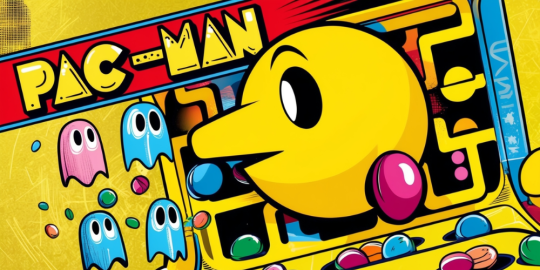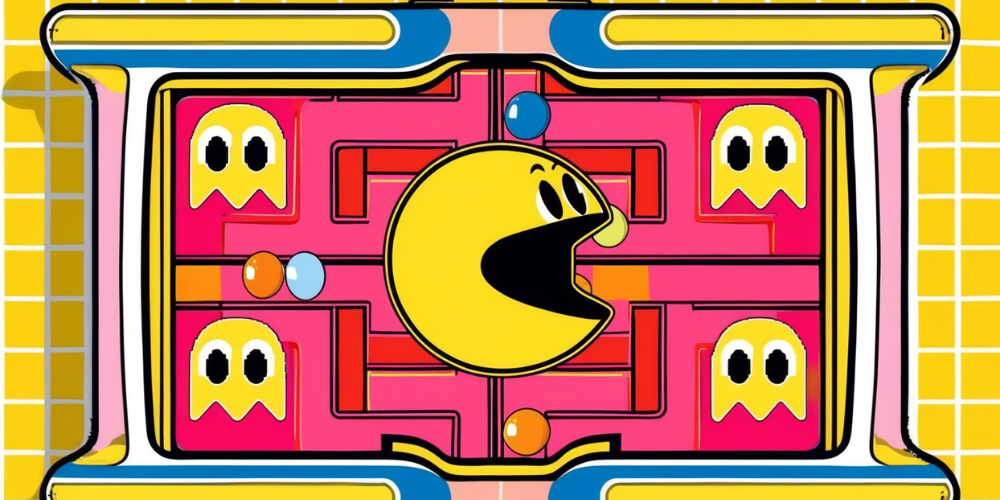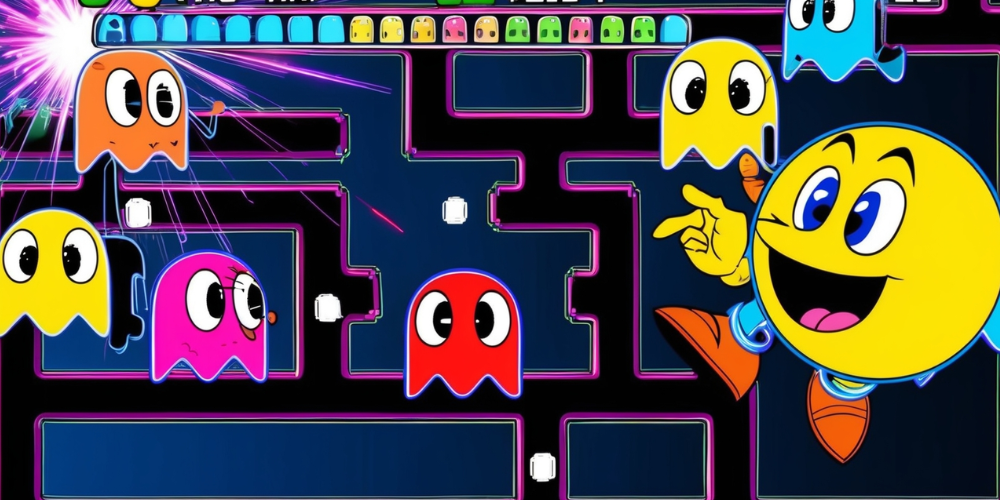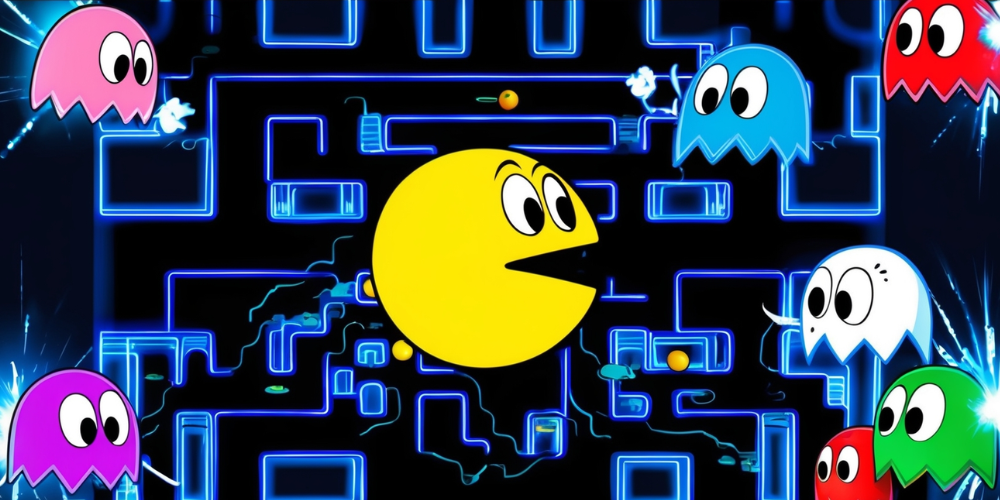
My fascination with video games began in the early 1980s, and it was a moment in time that felt electric. One of the greatest sparks in this burgeoning industry came in the form of a vibrant, pellet-munching yellow circle known as Pac-Man. Released by Namco in 1980, this game changed everything. Unlike the space shooters and racing games that dominated the arcades, Pac-Man offered a new kind of gameplay that emphasized exploration and decision-making over mere reflexes.
The Gameplay Mechanics
The mechanics of Pac-Man were deceptively simple, but they captured my imagination along with that of countless others. I remember the excitement of navigating the maze, gobbling up pellets while avoiding those pesky ghosts. The thrill of turning the tables with a power pellet and devouring ghosts in return drew me deeper into the experience. Each game felt like an invitation to strategize, making choices about when to run or fight—a remarkable twist compared to other arcade games at the time.
The Character Appeal
Pac-Man himself was iconic, not just because of his design but due to his personality conveyed through his actions. His constant hunger for pellets seemed almost relatable, resonating with the human desire for achievement. Marrying a simple visual with an engaging concept, he carved a niche in the gaming landscape. I felt a connection not just to Pac-Man but also to Ms. Pac-Man, who arrived in 1981, providing new levels of depth and story. She represented an evolution, making me feel as though this world had layers waiting to be explored.

The Social Experience of Arcades
Walking into an arcade was like entering a vibrant community, and I often felt the energy of collective engagement as I stood side by side with others, eager to grab a joystick. Pac-Man was especially magnetic; I remember the buzz of excitement when someone reached a high score or when players leaned in to watch. It wasn’t just about individual play; it formed bonds. We would cheer loudly for friends and tiptoe nervously while waiting for our turn to play. The connection over a game is one aspect I cherish to this day.
The Cultural Impact
In the cultural zeitgeist of the 1980s, Pac-Man transcended mere gaming. It became a symbol of the decade. I recall Pac-Man merchandise flooding the market, from T-shirts to board games. It infiltrated everyday life and even inspired an animated television series. There was a unique buzz in discussing high scores or strategies, extending the game beyond the screen. Pac-Man had woven itself into the fabric of 1980s culture, a true testimony to its sweeping influence.
The Rise of Strategy and Exploration in Gaming
Many games before Pac-Man had relied heavily on speed and linear progression, but this title ushered in a new philosophy—the idea that exploration and strategy could be equally entertaining. I remember a time when friends gathered to brainstorm the best paths through the maze, fine-tuning our skills and methodologies. This retrospective on decision-making reflected a fundamental change in how we approached arcade gaming. Pac-Man revealed a dimension of gameplay that had tantalizing depth, capturing the imaginations of players who craved more than just mindless action.

The Legacy of Ghosts
The four ghosts in Pac-Man—Blinky, Pinky, Inky, and Clyde—each possessed distinct characteristics that challenged players in unique ways. This strategic interaction forced me to think aggressively while cautiously plotting my movements. I loved dissecting their behaviors and figuring out how to outsmart them. The complexity added an everlasting layer to the game. Observing how all of this compounded in frantic bursts, I was hooked and fascinated.
Pac-Man's Role in Business and Marketing
The release of Pac-Man coincided with a boom in arcade gaming, creating a thriving industry around it. Suddenly, arcades became hot spots, attracting a diverse crowd looking for social interaction and entertainment. Business owners quickly realized the profitability of such a phenomenon. Pac-Man machines quickly appeared in restaurants, bars, and pizza places. Witnessing the growth of dedicated gaming spaces within the community filled me with excitement. This became not just a game but a successful business model, influencing future arcade development.
The Figuration of Fandom
As the years progressed, I found that fans began to rally around Pac-Man in a way few games had inspired before. Not only did we indulge in parlor talk about our high scores, but fandom blossomed into something deeper. I remember attending Pac-Man tournaments and local events where we could showcase our skills. This burgeoning culture of competition highlighted how important Pac-Man was to those of us who lived for the thrill of the game.
The Soundtrack of Pac-Man
Another memorable aspect of Pac-Man was its iconic sound. The memorable "waka-waka" as Pac-Man munched through the pellets became ingrained in the cultural consciousness. Even now, years later, I can hear the retro sounds of the game echoing in my mind. This audio experience contributed to immersing players in the game. Music and sound effects created a playful atmosphere that made Pac-Man stand out, enhancing the allure of being in that arcade world.

Pac-Man in Popular Media
Beyond just gaming and arcades, Pac-Man began to appear in various forms of media, from comic strips to television shows, reinforcing its status as a pop culture figure. I clearly remember the Pac-Man animated series, which added narrative depth to the character, fostering a sense of belonging among fans. Seeing Pac-Man become a versatile character across different platforms inspired me to explore the game further and engage with it in new ways.
The Global Phenomenon
As Pac-Man reached its fame, it wasn't just confined to American shores. I learned how widely embraced it became in Japan and elsewhere around the world. It represented a bridge between different cultures as players from all backgrounds gathered to enjoy arcade gaming. The game's catchy premise and unmistakable aesthetic made it universally appealing, and I could feel the global community coalescing around this simple yet revolutionary game.
The Transformation of Game Design
Pac-Man's release set a precedent for future game design. No longer were titles expected to follow a singular formula or theme. Developers took note of how a simple premise could lead to profound player engagement. I found myself drawn to games that offered exploration, strategy, and fun characters, fundamentally shifting the types of investments I made in the arcade. Looking back, I can attribute much of this shift in vision to Pac-Man's massive influence on the industry.
The Educational Dimension
It was fascinating to observe how educators and parents began to recognize Pac-Man's potential for teaching soft skills. Many noted that the game fostered critical thinking and spatial awareness. While my friends and I were just keen on high scores, there was underlying evidence that games could offer cognitive benefits. This intersection of gaming with education redefined its role, showcasing games as more than just entertainment but vessels for learning and growth.
Pac-Man in Modern Gaming
Even today, the legacy of Pac-Man endures. Its concepts have influenced countless titles, and variants of the game continue to crop up. Games that center on exploration rather than solely on competition draw directly from Pac-Man's framework. The unique charm of wandering through a maze filled with treasures resonates in various releases, keeping the ethos of Pac-Man alive. As I encounter new Pac-Man-inspired titles and adaptations, I feel a sense of nostalgia, celebrating my journey alongside this legendary character.